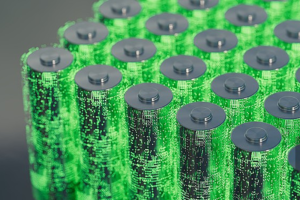In today’s world, the development of renewable energy has become a global consensus. As a representative of clean energy, solar power generation is becoming popular at an unprecedented rate. However, how to maximize the power generation potential of solar panels has always been the focus of the industry. Against this background, MPPT power tracking technology came into being and became a key technology to improve the efficiency of solar power generation. This article will explore in depth the principles, applications and importance of MPPT technology in the field of new energy.
1. What is MPPT?
MPPT is the abbreviation of Maximum Power Point Tracking, which is translated into “maximum power point tracking” in Chinese. The core goal of this technology is to ensure that the solar system always operates at the optimal working point to achieve maximum energy output. To understand the working principle of MPPT, we first need to understand the characteristic curve of solar cells.
The output characteristic curve of solar cells presents a nonlinear relationship. Under different light intensity and temperature conditions, the optimal working point (i.e., the maximum power point) of the solar panel will change. Traditional charge controllers are difficult to accurately track this dynamically changing optimal working point, resulting in energy loss. MPPT technology can accurately locate and lock the maximum power point through real-time monitoring and adjustment, greatly improving energy conversion efficiency.
2. How MPPT works: The art of smart algorithms
The core of MPPT controllers is their smart algorithms. These algorithms calculate the current output power by continuously sampling the output voltage and current of the solar panel. The controller then fine-tunes the operating voltage of the solar panel and observes the trend of power changes. Through this “hill climbing method” or more complex optimization algorithms, the MPPT controller can quickly find and lock the maximum power point.
It is worth noting that MPPT technology is not just a simple voltage regulation. It also needs to consider multiple factors such as load characteristics and battery charging status to comprehensively optimize the energy transmission efficiency of the entire system. This requires the MPPT controller to have powerful computing power and flexible control strategies.
3. MPPT vs PWM: The revolution of power tracking
When discussing MPPT technology, we have to mention its predecessor – PWM (pulse width modulation) technology. PWM controllers used to be the mainstream choice for solar systems, but they have obvious limitations. PWM controllers can only pull the voltage of the solar panel down to the battery voltage, which in many cases will lead to energy waste.
In contrast, MPPT controllers are able to operate over a wider voltage range. It can accept a higher input voltage and then convert it into a voltage suitable for battery charging through DC conversion. This flexibility allows MPPT technology to maintain high efficiency in a variety of weather conditions and system configurations.
In actual applications, MPPT controllers can typically extract 20%-30% more energy than PWM controllers. This difference is more pronounced in poor lighting conditions or low temperatures. Therefore, although the initial cost of MPPT controllers is higher, in the long run, the benefits they bring often outweigh the additional investment.
4. Advanced MPPT Technology: Multiple Optimization Strategies
With the development of technology, modern MPPT controllers are no longer limited to a single power tracking function. Many advanced MPPT systems integrate multiple optimization strategies to further improve the overall performance of solar systems.
Temperature Compensation
The efficiency of solar cells decreases as the temperature increases. Advanced MPPT controllers can dynamically adjust charging parameters based on temperature changes to ensure that the best charging efficiency is maintained even in high temperature environments.
Shade Optimization
Partial shading is a major factor affecting the efficiency of solar panels. Some high-end MPPT controllers use segmented MPPT technology, which can perform power tracking for each solar panel string separately to minimize the losses caused by shading.
Intelligent Diagnosis
Modern MPPT controllers are usually equipped with intelligent diagnostic functions. They can monitor the system operation status in real time and detect potential problems in time, such as aging of solar panels and loose connections, thereby improving the reliability and life of the system.
Remote monitoring and management
With the help of IoT technology, many MPPT controllers now support remote monitoring and management. Users can view system performance in real time and adjust parameters through mobile phone apps or web interfaces, which greatly improves the manageability of the system.
5. Performance of MPPT in different application scenarios
The advantages of MPPT technology are fully reflected in various solar applications:
Home photovoltaic system
For home photovoltaic systems, MPPT technology can significantly increase energy output, especially in the morning and evening when the light is weak. This means that users can get more clean electricity and accelerate the return on investment.
Large photovoltaic power stations
In large photovoltaic power stations, the benefits of MPPT technology are more significant. Through precise power tracking and optimization, MPPT can help power stations maintain efficient operation in various weather conditions and increase overall power generation.
Off-grid system
For off-grid systems in remote areas, MPPT technology is particularly important. It can maximize the use of limited solar resources, extend battery life, and improve system reliability.
Mobile Applications
In mobile applications such as RVs and ships, the advantages of MPPT controllers are more obvious. It can adapt to changes in different geographical locations and weather conditions, and always maintain the best charging efficiency.
6. Future Prospects of MPPT Technology
With the rapid development of renewable energy, MPPT technology is also constantly evolving. Here are several development trends worth paying attention to:
AI Empowerment
Artificial intelligence technology is bringing new possibilities to MPPT. Through machine learning algorithms, MPPT controllers can more accurately predict weather changes and energy needs, thereby achieving more intelligent power management.
High-frequency MPPT
The sampling frequency of traditional MPPT controllers is usually between a few Hz and tens of Hz. The new generation of high-frequency MPPT technology can increase the sampling frequency to the kHz level, achieving faster and more accurate power tracking, especially suitable for rapidly changing light conditions.
Multifunctional Integration
Future MPPT controllers may integrate more functions, such as battery management systems (BMS), inverters, etc., to form an integrated energy management solution. This can not only simplify the system structure, but also achieve more advanced energy optimization.
Nanotechnology Applications
The application of nanotechnology in the field of solar cells is opening up new possibilities. Future MPPT controllers may need to adapt to the characteristics of these new solar cells and develop more specialized power tracking algorithms.
Flexible Electronics Technology
As flexible solar cells develop, MPPT technology also needs to evolve accordingly. In the future, there may be MPPT solutions specifically for flexible photovoltaic systems to adapt to their unique working characteristics.
7. Economic Benefit Analysis of MPPT Technology
Although the initial investment of MPPT controllers is high, its long-term economic benefits are significant. The following is a simple return on investment analysis:
Assuming a 5kW home photovoltaic system, using an MPPT controller will generate 20% more electricity per year than using a PWM controller. If the electricity price is 1 yuan/kWh, then:
Additional annual income = 5kW * 4 hours/day * 365 days * 20% * 1 yuan/kWh = 1460 yuan
Considering that the MPPT controller is about 1500-2000 yuan more expensive than the PWM controller, this means that the additional investment can be recovered within 1-2 years. Thereafter, additional benefits will be brought in the 20-25 years of the system life.
In addition, MPPT technology can extend battery life and reduce maintenance costs. Although these indirect benefits are difficult to quantify, they have a significant impact on the overall return on investment.

8. The role of MPPT technology in the transition to new energy
In the context of the global accelerated transition to renewable energy, MPPT technology plays a key role:
Improve the competitiveness of renewable energy
By improving the efficiency of solar energy systems, MPPT technology helps reduce the levelized cost of electricity (LCOE) of solar power generation and enhances its ability to compete with traditional energy.
Promote the development of distributed energy
The high efficiency of MPPT technology makes small solar systems more affordable and promotes the popularization of distributed energy. This not only reduces the pressure on the power grid, but also improves the resilience of the energy system.
Support the energy storage revolution
With the advancement of battery technology, the combination of MPPT and energy storage systems will become an important part of the future smart grid, helping to solve the intermittent problem of renewable energy.
Accelerate energy digitization
As smart devices, MPPT controllers are becoming important nodes in the energy Internet. Through data collection and analysis, they provide valuable information for the optimization and management of energy systems.
9. MPPT Technology – A Revolutionary Breakthrough in Solar Power Generation Efficiency
MPPT power tracking technology is undoubtedly a revolutionary breakthrough in the field of solar power generation. It cleverly solves the problem of low efficiency of traditional solar energy systems and paves the way for large-scale application of renewable energy. Through the in-depth discussion of this article, we can summarize several key advantages of MPPT technology:
Significantly improve power generation efficiency
MPPT technology can maximize the output of solar panels under various lighting conditions, extracting 20%-30% more energy than traditional technology. This not only improves the overall efficiency of the system, but also accelerates the return on investment.
Strong adaptability
Whether it is a home system or a large power station, MPPT technology can flexibly respond to different application scenarios and environmental conditions. This adaptability makes MPPT a standard feature of solar energy systems.
Intelligent management
Modern MPPT controllers integrate a variety of intelligent functions, such as remote monitoring, fault diagnosis, etc., which greatly improves the manageability and reliability of solar energy systems.
Promote technological innovation
The development of MPPT technology has promoted innovation in the entire solar energy industry chain, from solar cells to energy storage systems, all benefit from MPPT technology.
Significant economic benefits
Despite the high initial investment, the long-term economic benefits of MPPT technology are significant, not only in terms of increased power generation, but also in terms of extended system life and reduced maintenance costs.
10. Development space for MPPT power tracking technology:
Algorithm optimization:
The introduction of artificial intelligence and machine learning makes the MPPT algorithm more intelligent and efficient, and can more accurately predict and adapt to various complex environments.
Hardware upgrade:
Advances in semiconductor technology will make MPPT controllers smaller, more efficient, and more reliable. The application of new materials may bring about a qualitative leap in performance.
System integration:
In the future, MPPT technology may be more deeply integrated into the entire energy system to achieve full-chain optimization from power generation, energy storage to electricity consumption.
Standardization and interoperability:
As the market matures, the standardization of MPPT technology will be further promoted, and the interoperability between various brands can better meet customer requirements.
Emerging applications:
With the application of solar technology in more fields, such as building integrated photovoltaics (BIPV) and solar cars, MPPT technology will also face new challenges and opportunities.
The development of MPPT (maximum power point tracking) technology is a microcosm of the continuous progress of solar power generation technology. It not only improves system efficiency, but also promotes technological innovation and cost reduction in the entire photovoltaic industry. With the further improvement of technology and the expansion of its application scope, we have reason to believe that MPPT technology will play a more critical role in the future energy landscape.
learn more:Wind-Solar Hybrid Systems: What Are They and Are They the Future?





